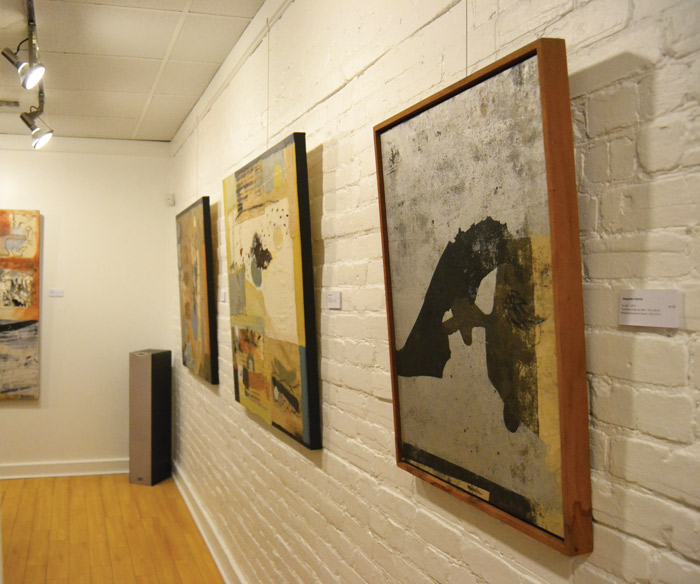Cuba has received a lot of international attention recently due to the improvement in its relationship with the United States. Though prospects seem better now, the Cuban population has had to endure much hardship after Fidel Castro’s 1959 revolution. The economic sanctions imposed by the Organization of American States (OAS) in 1962, coupled with the communist regime’s own economic impotence, resulted in poor living conditions during the ’70s that still haunt the country today.
Cuban artists in particular—alongside homosexuals, counter-revolutionary political activists, and other state-branded deviants—suffered immensely at the hands of the regime, facing brutal imprisonment and oftentimes compulsory military service within the ‘Military Units to Aid Production.’ Art Cuba, the latest group exhibition at Galerie Aura, stands as the first exhibition of Cuban art in Canada since the recent rapprochement, and brings the unique historic-cultural struggles inherent to the country to the forefront.
The gallery provides a glimpse into some of the complex dualities that pervade the Cuban psyche: The ocean is at once a symbol of limitless freedom and a body of entrapment. The communist regime promises progress yet delivers backwardness. The very distinctively Cuban identity fused with Afro-Cuban culture are all concepts explored by various artists hailing from Cuba’s artistic elite.
Immediately upon entering the gallery, the colourful chaos of Carlos Quintana’s “Intriga en el solar” sets the tone of the exhibition. Described as an artist whose work stems from “phantasmagoric hallucination” and seem to reflect a stream of consciousness art style, Quintana’s work explores a vision of the supernatural rooted in Afro-Cuban culture. He accomplishes this through an intricate blending of bright red floral patterns into human figures, the zoomorphism exhibited on said human figures, and finally their colour contrasted with a jet black spiritual figure in the foreground. Manuel Mendive’s untitled acrylic on canvas taps into this same Afro-Cuban culture, focusing on the Yoruba religion in particular. In an attempt to map the Yoruba concept that there is one universal soul from which all life stems from, Mendive depicts various human figures literally fused with animal and plant life and engaged in a process of perpetual rebirth.
In contrast to these often bright, supernatural depictions, Alexis Leyva Machado, known as Kcho, portrays the grim reality facing illegal Cuban emigration. His simple, yet powerful, image of an oar, symbolizing the perilous journey awaiting illegal immigrants, that gradually melds into a human femur is quite a succinct snapshot of the grave decision made by thousands of Cubans.
Liudmila Velasco and Nelson Ramirez’s collaborative work “El Viaje” further sheds light on the ocean’s place in the Cuban psyche. By depicting a woman cramped within a suitcase in the fetal position upon the high seas, Velasco and Ramirez situate the ocean as both a place of birth, offering new lives to successful escapees, and of extreme confinement, as potential emigrants remain totally eclipsed by water on all sides.
The piece that stood out most was Alfredo Sarabia’s “Entramado,” which in Spanish means both ‘a confining framework,’ but also a ‘schematic’ or means for structuring and operating something. “Entramado” depicts a common scene in Cuba: That of an open ended, sprawling mass of power cables connected to publicly accessible transformers. As a result of the harsh economic conditions that define Cuban reality, society is one that is constantly drawn to improvisation in order to meet basic standards of living. Consequently, such an impromptu arrangement of wires and transformers is one that is simultaneously limiting and empowering by necessity. The union between the Cuban and USSR flags in the background, surrounded by wires, furthers this sense of imposed limitation. The piece itself, riddled with functioning power outlets, invites viewers to participate in this improvisatory nature, as each outlet is actually functional and thus mirrors the transformers depicted.
Ultimately, Galerie Aura’s Art Cuba exhibition powerfully sheds light on the Cuban story, and projects high hopes for the future of Cuban art in the wake of rapprochement.
Art Cuba is located at Galerie Aura (2050 Rue Crescent) and is running from from Oct. 14 to Dec. 15. Admission is free.









